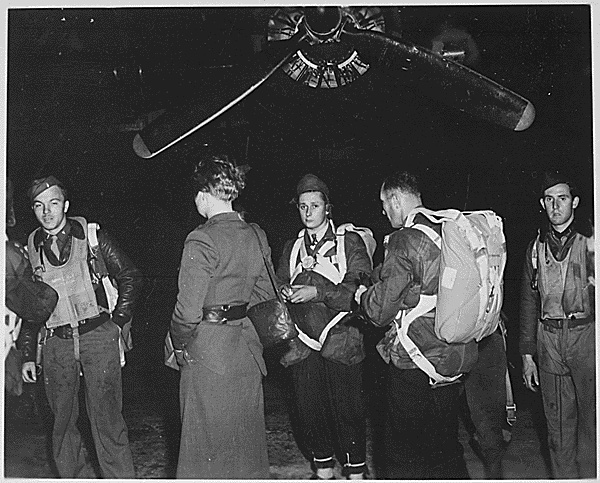In mid-January, Israel and Hamas agreed to a ceasefire, putting a temporary stop to the war in Gaza, which began after the attacks of October 7, 2023, and which has killed more than fifty thousand Palestinians. (The combined Israeli death toll from the Hamas attack and the ensuing war is around three thousand people.) Throughout the first fifteen months of the conflict, Israel’s behavior, specifically in refusing to allow sufficient amounts of aid into Gaza, drew international condemnation. The humanitarian situation improved during the ceasefire, but in early March, Israel suspended aid completely, and talks to extend the ceasefire broke down. Full-scale fighting has since resumed, and the amount of food and medicine that remains in Gaza is woefully inadequate for the needs of its people.
I recently spoke by phone with Louise Wateridge, a senior emergency officer at the United Nations Relief and Works Agency for Palestine Refugees in the Near East (UNRWA). Wateridge left Gaza in December of 2024, and UNRWA’s international staff has not been allowed back into the territory for several months. (Last year, the Israeli government passed two bills, which went into effect in January, that together prevent the Israeli government from communicating with UNRWA, and prevent UNRWA from operating in Israel or the occupied territories. UNRWA’s local staff has been trying to continue its work.) I wanted to understand what had changed on the ground during the ceasefire, and what new reality Gazans have faced since it ended. During our conversation, which has been edited for length and clarity, we also discussed how aid workers are trying to navigate life-threatening Israeli military actions, what the end of communication between UNRWA and the Israeli government might mean for the delivery of aid going forward, and how Gazan society will continue to splinter as starving people become increasingly desperate.
How would you describe the current moment—this period after the ceasefire ended?
As of today, I think it’s safe to say that all the progress that was achieved during the ceasefire has been reversed. It has now been two months exactly, as of Friday, May 2nd, that there have been absolutely no supplies entering the Gaza Strip. And that’s not just humanitarian supplies—that’s all supplies. That’s commercial supplies, that’s fuel, it’s food, it’s medicine. It is absolutely everything. Nothing has entered the Gaza Strip for two whole months.
You could see, for weeks on end, the achievements that were made when the ceasefire was in effect. UNRWA was able to feed the entire population during the ceasefire. We provided non-food items—so that’s shelter items, hygiene kits, and things like that—to five hundred thousand people. The achievements from colleagues on the ground were absolutely endless because we were able to do our jobs. And the situation now is so beyond imagination, so beyond words at this point, because people are being starved, basically. These are choices that are being made to prevent supplies from entering. And it has been prolonged for two months. When we speak to our colleagues, when we speak to people in Gaza, children are now starving. People are surviving on one meal a day. People are without medicine.
I just want to take a step back for a second, and understand what was happening during the ceasefire. We had been hearing about the inability to get goods across the border, and about problems distributing goods within Gaza before the ceasefire. So what changed in that period?
The difference was access, really. We spent more than a year, from October 7, 2023, until January, 2025, with a humanitarian response that was strangled in absolutely every way. Our facilities were hit. They were impacted. I spent hours, I couldn’t tell you how many hours, sitting in convoys waiting to deliver aid to people, waiting to move, waiting to have access and being denied, being turned away. I was in Rafah this time last year, on the ground before the military operations occurred. There were 1.4 million people down there, and then it was chaos. But during the ceasefire, we had bulldozers and machinery that were needed delivered. We had food delivered. The looting situation dwindled because people had what they needed. We were able to provide services and provide aid to people in all areas of the Gaza Strip, and that simply was not the case before the ceasefire. It really happened overnight.
What do you mean by access? Can you talk more about that?
For the best part of a year, you would talk to doctors at hospitals, and they’d say, “We always have enough fuel for about three days.” The first day they would have fuel. This is to run the generators, to run the incubators, to keep babies alive. The machines, the air-conditioning in I.C.U. units, everything that runs a hospital was running on these generators from fuel. So the first day they’d have everything. The second day they’d have to start switching machines off, switching their air-conditioning off. Flies would be entering the I.C.U. because they’d have to open windows because there was no air-conditioning. And on the third day, they’d have to start shutting machinery down, and then there’d be enough fuel again, because just a little bit more would come in.
People had enough to eat maybe that week, but what’s happening next week? So it was access to supplies that changed. We had thousands of trucks entering during the ceasefire, which is something we never saw before the ceasefire. Before the ceasefire, we would sometimes maybe get fifty trucks or so a day. And a lot of it was getting looted because the population was so desperate. So we went from that kind of number to more than four thousand trucks per week during the ceasefire. People were getting tents, too. Everything just changed.
But it was also the access that we had within the Gaza Strip. There were areas that we haven’t seen for months. Rafah was one of them. Our staff were able to return to their homes in Rafah. We were able to have access to facilities that we hadn’t seen for months on end because we were denied access. We were able to restore some of the health centers. We were able to repair some of these facilities, and use them again as health centers, and use them as shelters.
The same was true in Jabalia. At the end of last year, we had a complete and total siege of Jabalia. After the ceasefire, we were able to access those areas. We were able to find people. People were able to return home. Very sadly, people were able to return to these buildings where they’d been and dig their relatives out. A lot of people I know and a lot of our colleagues, the first thing they did in the ceasefire was return to their homes to actually dig and find their families who were still under the rubble—some had been there for weeks, some of them over a year—and bury them and have some kind of dignity in mourning and putting those lives to rest. So that’s the situation we had in the ceasefire. And now all of that is lost. We also began educating over fifty thousand children again, but that has been severely impacted.
When I talked to you and other aid workers in the first year of the war, you would say that aid was always insufficient but that it was rarely zero. What was needed were five hundred trucks per day, but instead it would be a hundred or it would be two hundred or it would be seventy-five that would be allowed in. But what’s happening now—zero trucks—is strikingly worse.
Premium IPTV Experience with line4k
Experience the ultimate entertainment with our premium IPTV service. Watch your favorite channels, movies, and sports events in stunning 4K quality. Enjoy seamless streaming with zero buffering and access to over 10,000+ channels worldwide.
















